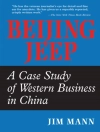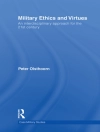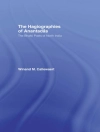- Focus on key issues in expanding the genetic base for Musa, including, exploiting current collections of germplasm and collecting and evaluating wild Musa species and landraces
- Covers methods for improving fertility, resistance and other traits in Cavendish
- Reviews the range of conventional and modern molecular techniques for breeding new banana varieties
Tabela de Conteúdo
1.An overview of genetic improvement in bananas over the last century: Mike Smith, Queensland Department of Agriculture and Fisheries, Australia; and Michael Pillay, Vaal University of Technology, South Africa;
Part 1 Classification
2.Cytogenetics of structural rearrangements in Musa hybrids and cultivars: Fajarudin Ahmad, Indonesian Institute of Sciences (LIPI), Indonesia and Wageningen University & Research, The Netherlands; Peter M. Bourke and Henk Schouten, Wageningen University & Research, The Netherlands; Hugo Volkaert, Center for Agricultural Biotechnology – Kasetsart University, Thailand; Gert H. J. Kema, Wageningen University & Research, The Netherlands; and Hans de Jong, Kasetsart University, Thailand and Wageningen University & Research, The Netherlands;
3.Identifying and classifying banana cultivars: Jeff Daniells, Queensland Department of Agriculture and Fisheries, Australia; and Steven B. Janssens, Botanic Garden Meise, Belgium;
4.Exploiting current Musa collections: V. Guignon, Alliance of Bioversity International and CIAT, France;
Part 2 Broadening the genetic base
5.Scope of collecting wild Musa species germplasm: Julie Sardos, Alliance of Bioversity International and CIAT, Montpellier Office, France;
6.Collection and evaluation of wild Musa species: Hugo A. Volkaert, Center for Agricultural Biotechnology – Kasetsart University, Thailand;
7.Collection and evaluation of banana and plantain landraces in Africa: D. Karamura and W. Ocimati, Bioversity International, Uganda; G. Blomme, Bioversity International, Ethiopia; J. G. Adheka, University of Kisangani (UNIKIS), Democratic Republic of the Congo; C. Sivirihauma, Université Catholique du Graben (UCG), Democratic Republic of the Congo; D. B. Dhed’a, University of Kisangani (UNIKIS), Democratic Republic of the Congo; and E. Karamura, Bioversity International, Uganda;
8.Seed germination, preservation and population genetics of wild Musa germplasm: Bart Panis, Bioversity International and Katholieke University of Leuven (KUL), Belgium; Simon Kallow, Royal Botanical Gardens Kew, UK and Katholieke University of Leuven (KUL), Belgium; and Steven B. Janssens, Meise Botanic Garden, Belgium;
9.Safe dissemination of germplasm resources of banana: John Thomas, The University of Queensland, Queensland Alliance for Agriculture and Food Innovation, Ecosciences Precinct, Australia; Sébastien Massart, Integrated and Urban Plant Pathology Laboratory, Gembloux Agro-Bio Tech, University of Liège, Belgium; Ines Van den Houwe, Bioversity International Transit Centre, KU Leuven, Division of Crop Biotechnics – Laboratory of Tropical Crop Improvement, Belgium; Nicolas Roux, Bioversity International, France; and Kathy Crew, Queensland Department of Agriculture and Fisheries, Ecosciences Precinct, Australia;
Part 3 Genetic improvement through breeding
10.Making banana breeding more effective: F. Bakry, J. P. Horry and C. Jenny, CIRAD, UMR AGAP and AGAP, Université de Montpellier, CIRAD, INRAE, Institut Agro, France;
11.Overcoming the fertility crisis in bananas (Musa spp.): Delphine Amah, International Institute of Tropical Agriculture (IITA), Nigeria; David W. Turner, The University of Western Australia, Australia; D. Jane Gibbs, Consultant, Australia; Allan Waniale, Makerere University and National Agricultural Research Laboratories, Uganda; Gil Gram, International Institute of Tropical Agriculture (IITA), Uganda and Katholieke University of Leuven (KUL), Belgium; and Rony Swennen, International Institute of Tropical Agriculture (IITA), Tanzania and Katholieke University of Leuven (KUL), Belgium;
12.Targeted improvement of Cavendish clones: Eli Khayat, Rahan Meristem (1998) LTD., Israel;
13.Developing hybrid banana varieties with improved properties: Edson Perito Amorim, Vanusia Batista de Oliveira Amorim, Manassés dos Santos Silva, Fernando Haddad, Claudia Fortes Ferreira and Janay Almeida dos Santos Serejo, Embrapa, Brazil;
14.Genetic modification of bananas: the long road to farmers’ fields: James Dale, Queensland University of Technology, Australia; Wilberforce Tushemereirwe, National Agricultural Research Organisation, Uganda; and Robert Harding, Queensland University of Technology, Australia;
15.The usage of phenotyping, genetics and functional genomics approaches to improve environmental stress factors in banana: Sebastien Christian Carpentier, Bioversity International and Katholieke University of Leuven (KUL), Belgium; and David Eyland, Katholieke University of Leuven (KUL), Belgium;
Sobre o autor
Dr Sebastien Carpentier is a bioscience engineer, specialized in cell and gene biotechnology and agriculture. He joined Bioversity International in October 2017. He is leading the banana characterization and evaluation team of the Alliance between Bioversity International and CIAT. His team focuses on phenotyping the biodiversity of crops by integrating abiotic stress physiology with omics technology. Sebastien is working in the Leuven office hosted by KULeuven. KULeuven hosts the Bioversity International collection of the tropical crop banana (Musa).












